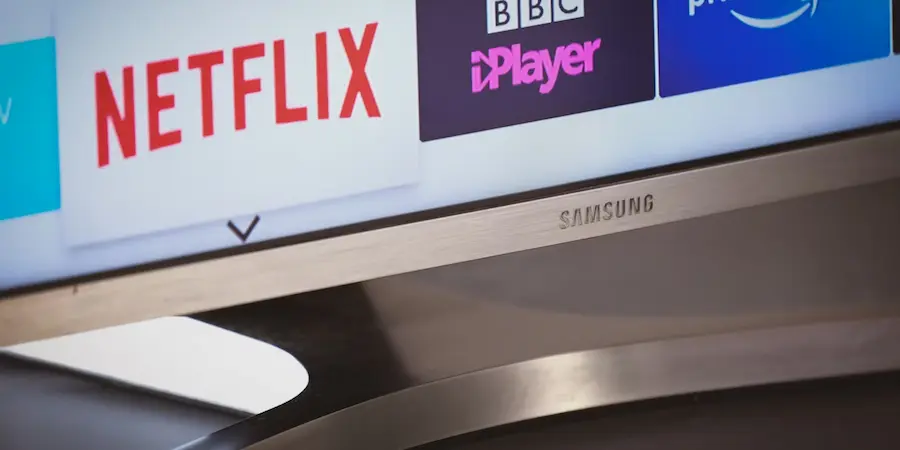Don’t remember the exact model of your Samsung TV? Stay calm, geek: locating and deciphering it is easier than it seems, and in a matter of seconds you’ll know whether it’s QLED, LED or plasma, in which region it’s sold and even its actual screen size. All you need to do is look at a sticker on the back or, if you have a Smart TV, dive a couple of taps into the menu to see the full code alongside the serial number and software version. Sounds good to bring order to your living room setup? Also, understanding that code helps you know its age and solve practical doubts, for example when an antenna doesn’t tune channels because the tuner isn’t the right one. Let’s go, like when you assemble a Raspberry Pi step by step: clear, direct and keeping the tech touch.
Where to find the model number
The fastest and most universal way is to go straight to the source: the physical label. All Samsung televisions have an identification sticker on the rear panel that includes the model number, a barcode and other key data; by the way, that same label also appears on the brand’s equipment such as soundbars, home theater systems, Blu-ray players and MP3/MP4 players, in case you’re organizing your entire ecosystem.
If your Samsung is a Smart TV, you have an additional and very convenient route from the couch. Open Settings from the gear icon on the home menu, and if needed go into “All Settings” to display the full panel; now navigate to Support and enter “About This TV”, which appears at the end of that menu, where you’ll see at a glance the model code, the serial number and the installed software version. This method is only available on smart TVs, but it’s extremely useful if your TV is mounted and you don’t want to remove it from the wall to check the back.
With that model number in hand you can look up more information, including the year of manufacture, and have a solid basis for any support request or tuning adjustment. As clear as a visible USB-C port.

How to interpret the models (2008 onwards)
The model code may look like gibberish at first, but it’s actually a very logical map. The first character identifies the panel type: Q is QLED, U is LED, P is plasma, L is LCD, H is DLP and K corresponds to OLED. Next comes a letter that marks the target market: N for North America, E for Europe and A for Asia, an important detail when understanding regional compatibilities.
After that appears the first number, which indicates the screen size in inches; for example, 62 means a 62-inch panel. From there, you’ll see a combination of letters and numbers that defines the family and the series. Some illustrative examples: LS03C identifies The Frame 2023, LS03B is The Frame 2022, and codes like QN***C correspond to Neo QLED 8K from 2023; you’ll also recognize AU for the 2021 UHD range or TU for the 2020 range. This sequence distinguishes generations and product lines very precisely.
The next letter of the code indicates the model’s internal generation (A is first generation, B second), and immediately after appears the built-in tuner’s letter, a crucial detail to understand why your antenna receives — or doesn’t receive — certain channels: F equals ATSC/QAM in the United States and Canada, U corresponds to DVB in Europe and G identifies ISDB-T in Latin America. Then usually comes the design code, typically X, and finally the country or region suffix, which can be ZA (U.S.), RU (Russia), UA (Ukraine), ZC (Chile), XU (Europe/United Kingdom) or XY (Australia). See how, once ordered, reading the model is like decoding a hardware SKU?
If your TV is earlier than 2008
Older model codes follow a different logic, though equally deducible. The first two letters define the type of television: FP/HP for plasma, LN for LCD, HL for DLP and TX for CRT. After a dash comes a letter that marks the model year: T corresponds to 2007, S to 2006, R to 2005, P to 2004, N to 2003 and M to 2002, a direct clue to place the age of your panel without needing to dig up invoices.
Next you’ll see two digits with the screen size (for example, 23 for 23 inches), followed by a numeric block that indicates the specific series. Later comes the resolution letter: F identifies Full HD and H indicates high definition (HD). Then the X repeats as a design code and the set closes with a block of letters with internal manufacturing information.
With this breakdown you will be able to recognize at a glance whether you’re facing an HD or Full HD model, place it by year and understand whether its tuner and format fit your setup—something key when checking reception problems. And the best part: everything starts from a single model code that you can find in seconds, either on the rear sticker or in the Smart TV menu. Ready to identify your TV without manuals or apps, and finally have your setup as organized as your PC components list?

